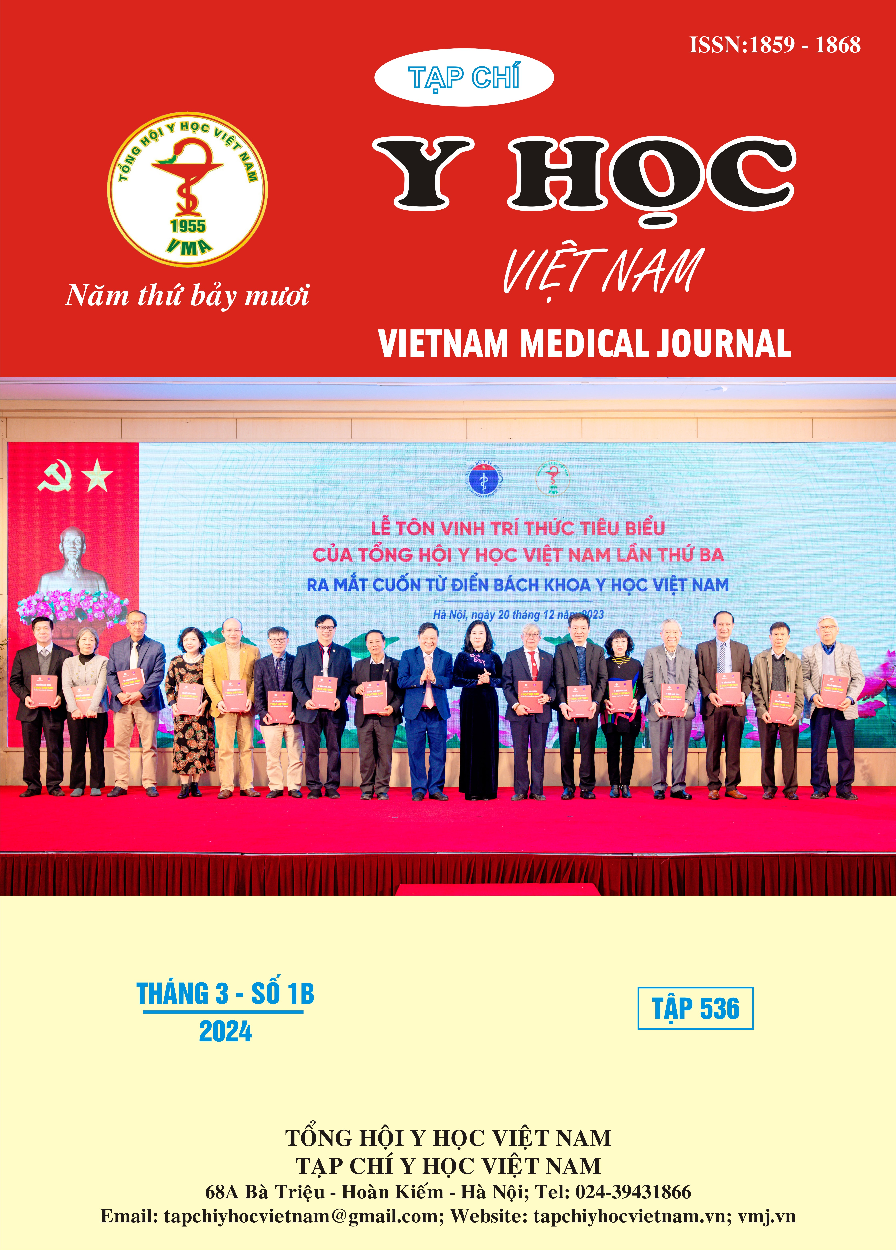EPIDEMIOLOGICAL CHARACTERISTICS, CLINICAL CHARACTERISTICS, AND TREATMENT RESULTS OF DENGUE HEMORRHAGIC FEVER AT PHU QUOC HEALTH CENTRE 2023
Main Article Content
Abstract
Objectives: To describe epidemiological characteristics, and clinical characteristics and evaluate the results of treatment of DHF at Phu Quoc health center. Materials and methods: A cross-sectional descriptive study on 777 patients with a confirmed diagnosis of Dengue hemorrhagic fever treated at Phu Quoc health center from January to December 2023. Results: Regarding epidemiological characteristics: Men have a higher infection rate than women with a rate of 62.42%. The majority of patients are under 30 years old, with the majority being between 10 and 20 years old with a rate of 28.93%. Different communes and wards have different disease rates. Duong Dong town has the highest disease rate, accounting for 42.34%. Of the patients enrolled in the study, 9,43% had dengue with warning signs and 1,89% had severe dengue. Up to 51,57% of patients had a high fever above 390C, 69,18% of patients had signs of bleeding, and hepatomegaly was 1.26%, 1.89% of patients had Shock. many clinical symptoms were recorded such as headache (61%), nausea (34,59%), arthralgia (35,85%), fatigue (34,59%), and diarrhea (6,92%). Treatment results: the average treatment time was 5.28 ± 1.86 days; There weren't patients who returned to shock and 02 patients received blood transfusions during treatment. A total of 34 (4,4%) patients changed to more severe disease and referred to higher level. 743 (96.9%) patients were cured at the hospital. Conclusion: Men have a higher infection rate than women. The majority of patients are between 10 and 20 years old. Different communes and wards have different disease rates. There was a small rate had severe dengue. The clinical signs of the patients were quite diverse and the cure rate was high.
Article Details
References
2. Bộ y tế (2019). Hướng dẫn chẩn đoán, điều trị sốt xuất huyết Dengue, Ban hành theo Quyết định số 3705/QĐ-BYT ngày 22 tháng 08 năm 2019 của Bộ trưởng Bộ Y tế, https://emedicine. medscape.com/article/386808-overview.
3. W. Fukushima, M. Fujioka, T. Kubo. et al. (2010), "Nationwide epidemiologic survey of idiopathic osteonecrosis of the femoral head". Clin Orthop Relat Res, 468(10), pp. 2715-24.
4. Nguyễn Văn Minh (2019), "Nghiên cứu đặc điểm lâm sàng, cận lâm sàng và đánh giá kết quả điều trị bệnh sốt xuất huyết Dengue người lớn tại Bệnh viện đa khoa trung tâm An Giang năm 2018-2019, Luận văn chuyên khoa II, Trường Đại học Y Dược Cần Thơ.".
5. Lê Thị Lựu (2010), "Nghiên cứu một số đặc điểm lâm sàng, cận lâm sàng và kết quả điều trị BN sốt xuất huyết tại khoa truyền nhiễm Bệnh viện Đa Khoa Trung Ương Thái Nguyên 2009-2010", (85), pp. 83-89.
6. Ngô Văn Truyền , Đoàn Văn Quyền (2014), "Nghiên cứu đặc điểm lâm sàng, cận lâm sàng, kết quả điều trị và các yếu tố tiên lượng bệnh sốt xuất huyết Dengue người lớn tại Bệnh viện Đa Khoa Trung Ương Cần Thơ.". Tạp chí y học thực hành, Tập 902 (số 1), pp. 25-29.
7. Nguyễn Việt Thu Trang (2015), "Nghiên cứu đặc điểm lâm sàng, cận lâm sàng và đánh giá kết quả điều trị bệnh sốt xuất huyết Dengue người lớn tại khoa Nhiễm Bệnh viện Đa Khoa Trung Ương Cần Thơ". Tạp chí Y Dược Cần Thơ, pp. 1-7.


